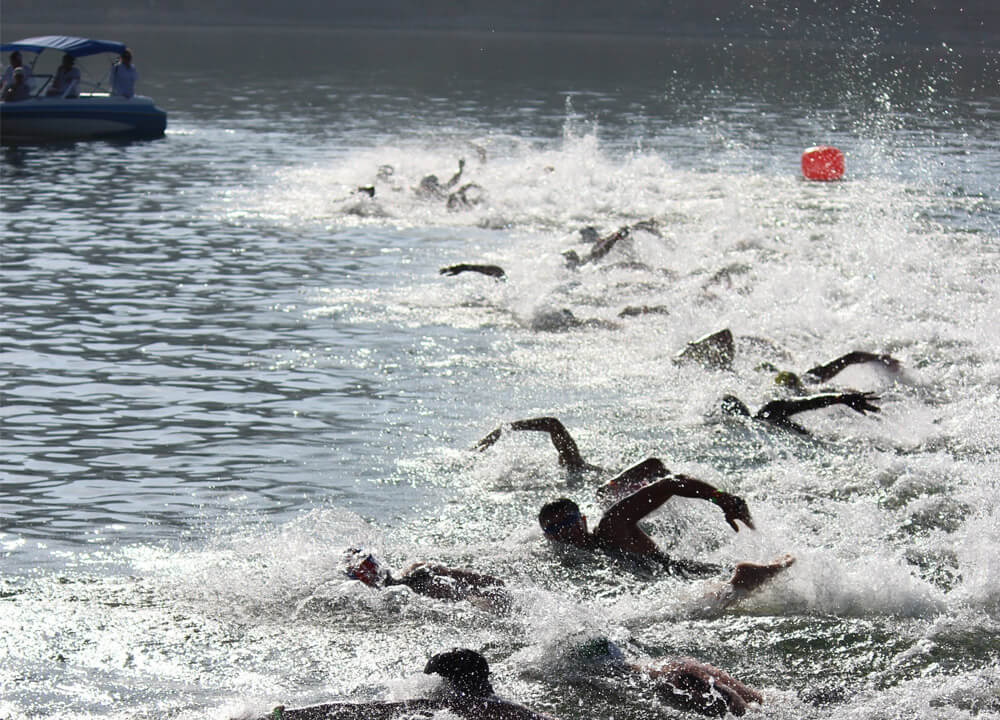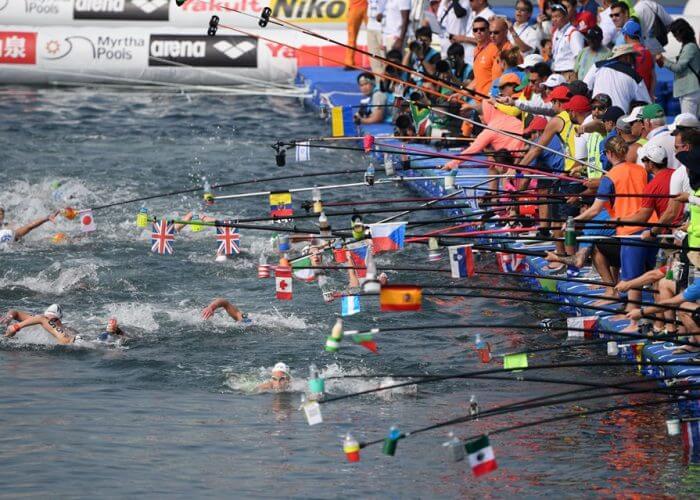5 Things to Know Before an Open Water Race

5 Things to Know Before an Open Water Race
By Suzie Ryan, Swimming World Intern
Open water racing is tough. You will be bumped around, swam over, and your googles will be ripped off. You will be faced with less than ideal conditions and unexpected variables throughout the race. Success in an open water race comes down to two things: A tough mindset and being prepared for the race.
Know Your Conditions
Before any open water race, you should know what the weather and conditions will be like on the day. Will it be cold or hot? What is the predicted water temperature? Will it be hot outside but a cold-water temp? Is there a current in the water? Knowing these external factors will help determine how you warm up. Will it be a dry warmup, where you activate on dryland and skip, or will you have a wet warmup where you test out the course and get a feel for the water? Knowing your external conditions will help you prepare not only to warmup but also to know what food and drink you need to take and if you need to pack extra jackets, gloves or beanies.
Know Your Equipment For the Day
 Open Water swimming isn’t like pool swimming, and you can’t just show up on the day with a race suit, cap and goggles and dive in for your race. It would help if you came prepared with all the equipment to set yourself up for a successful race. I always make sure I have hairspray, duct tape (for my cap and transponders), Vaseline or wool fat (depending on water temperature), gloves, baby wipes, eucalyptus oil, spare goggles, caps and race suits, plastic bags (for your feet when putting your race suit on), feed stick, gels, hydration and food in my open water kit. If you forget anything in your open water kit on the day, don’t stress. Just ask a fellow swimmer and run with it.
Open Water swimming isn’t like pool swimming, and you can’t just show up on the day with a race suit, cap and goggles and dive in for your race. It would help if you came prepared with all the equipment to set yourself up for a successful race. I always make sure I have hairspray, duct tape (for my cap and transponders), Vaseline or wool fat (depending on water temperature), gloves, baby wipes, eucalyptus oil, spare goggles, caps and race suits, plastic bags (for your feet when putting your race suit on), feed stick, gels, hydration and food in my open water kit. If you forget anything in your open water kit on the day, don’t stress. Just ask a fellow swimmer and run with it.
Have Your Feeds Prepared

Photo Courtesy:
If you are swimming 10 kilometres or longer, ensure you have your feeds prepared. Know if you are going to have a hot feed or a cold feed. What lap will you feed on? I always like to feed every two and a half kilometres in a 10 kilometer race. Will you have a caffeinated gel or a non-caffeinated gel? Will you have Gatorade or water with your gels? When trying out new gels for your feeds, always ensure you test them out before a race, preferably a couple of weeks before training during the main set. This will allow you to know if the gel is suitable for you, if you like the taste of it or if it upsets your stomach and you need to try a new gel.
Know Your Tactics
Open water racing is all about tactics. You may be the best swimmer in the field, but you won’t win if you don’t have good tactics. A common mistake made in an open water race is missing the turning buoy. Know where all your buoys are positioned and what side you need to turn on before you race. Know how to drag off other swimmers and what position maximizes draft. Don’t be afraid to stay in a pack, since swimming with others is much easier than swimming by yourself and 10 kilometres is a long way.
Most open water swimmers like to sit on each other’s hips as this is where you will get the most draft off the other swimmer. Sitting on another swimmer’s feet will also help pull up along in the pack and will allow you to limit lifting your head for sighting. Before you start your race know your key sighting points. This could be a pole, a big tree, a building or a pier. Knowing these key sighting points will help you know where exactly you are on the course and help you swim in a straightish line.
Have a Recovery Plan
Recovery is vital after any open water race. Having a recovery plan before your race will help speed up and maximize your recovery post-race. This is ideal, especially if you are racing 10 kilometers one day and having to back up the next day and race the five kilometers. Ice baths, hot baths, compression skins, massages, stretching with trigger balls, and foam rollers are essential to get rid of the lactic acid and loosen up the muscles straight after racing.
Normatec boots and magnesium spray also ensure the body is primed and ready to race the next day again. Nutrition and hydration are also essential to help recovery. Once you finish racing, ensure you fuel your body with carbs and good fats and drink plenty of water and electrolytes throughout the day to help your performance the next day.
All commentaries are the opinion of the author and do not necessarily reflect the views of Swimming World Magazine nor its staff.



